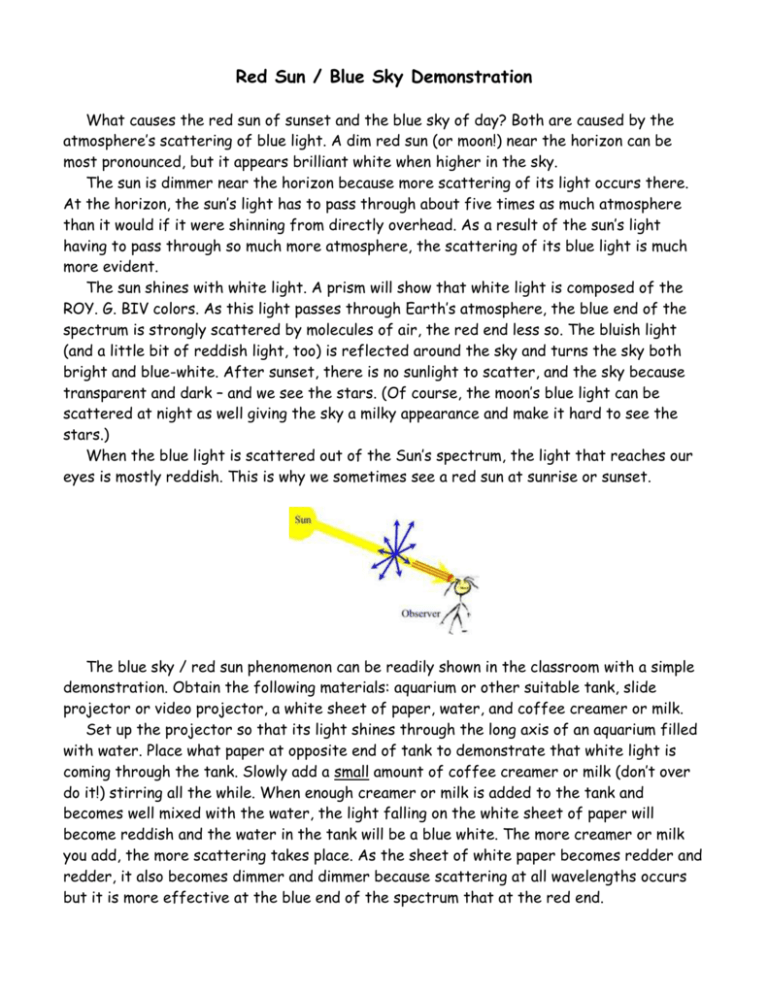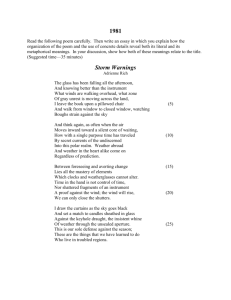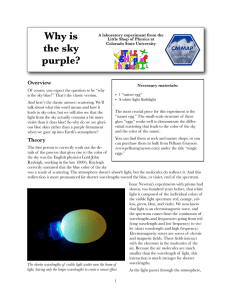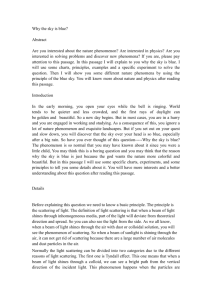Red Sun / Blue Sky Demonstration
advertisement

Red Sun / Blue Sky Demonstration What causes the red sun of sunset and the blue sky of day? Both are caused by the atmosphere’s scattering of blue light. A dim red sun (or moon!) near the horizon can be most pronounced, but it appears brilliant white when higher in the sky. The sun is dimmer near the horizon because more scattering of its light occurs there. At the horizon, the sun’s light has to pass through about five times as much atmosphere than it would if it were shinning from directly overhead. As a result of the sun’s light having to pass through so much more atmosphere, the scattering of its blue light is much more evident. The sun shines with white light. A prism will show that white light is composed of the ROY. G. BIV colors. As this light passes through Earth’s atmosphere, the blue end of the spectrum is strongly scattered by molecules of air, the red end less so. The bluish light (and a little bit of reddish light, too) is reflected around the sky and turns the sky both bright and blue-white. After sunset, there is no sunlight to scatter, and the sky because transparent and dark – and we see the stars. (Of course, the moon’s blue light can be scattered at night as well giving the sky a milky appearance and make it hard to see the stars.) When the blue light is scattered out of the Sun’s spectrum, the light that reaches our eyes is mostly reddish. This is why we sometimes see a red sun at sunrise or sunset. The blue sky / red sun phenomenon can be readily shown in the classroom with a simple demonstration. Obtain the following materials: aquarium or other suitable tank, slide projector or video projector, a white sheet of paper, water, and coffee creamer or milk. Set up the projector so that its light shines through the long axis of an aquarium filled with water. Place what paper at opposite end of tank to demonstrate that white light is coming through the tank. Slowly add a small amount of coffee creamer or milk (don’t over do it!) stirring all the while. When enough creamer or milk is added to the tank and becomes well mixed with the water, the light falling on the white sheet of paper will become reddish and the water in the tank will be a blue white. The more creamer or milk you add, the more scattering takes place. As the sheet of white paper becomes redder and redder, it also becomes dimmer and dimmer because scattering at all wavelengths occurs but it is more effective at the blue end of the spectrum that at the red end.










